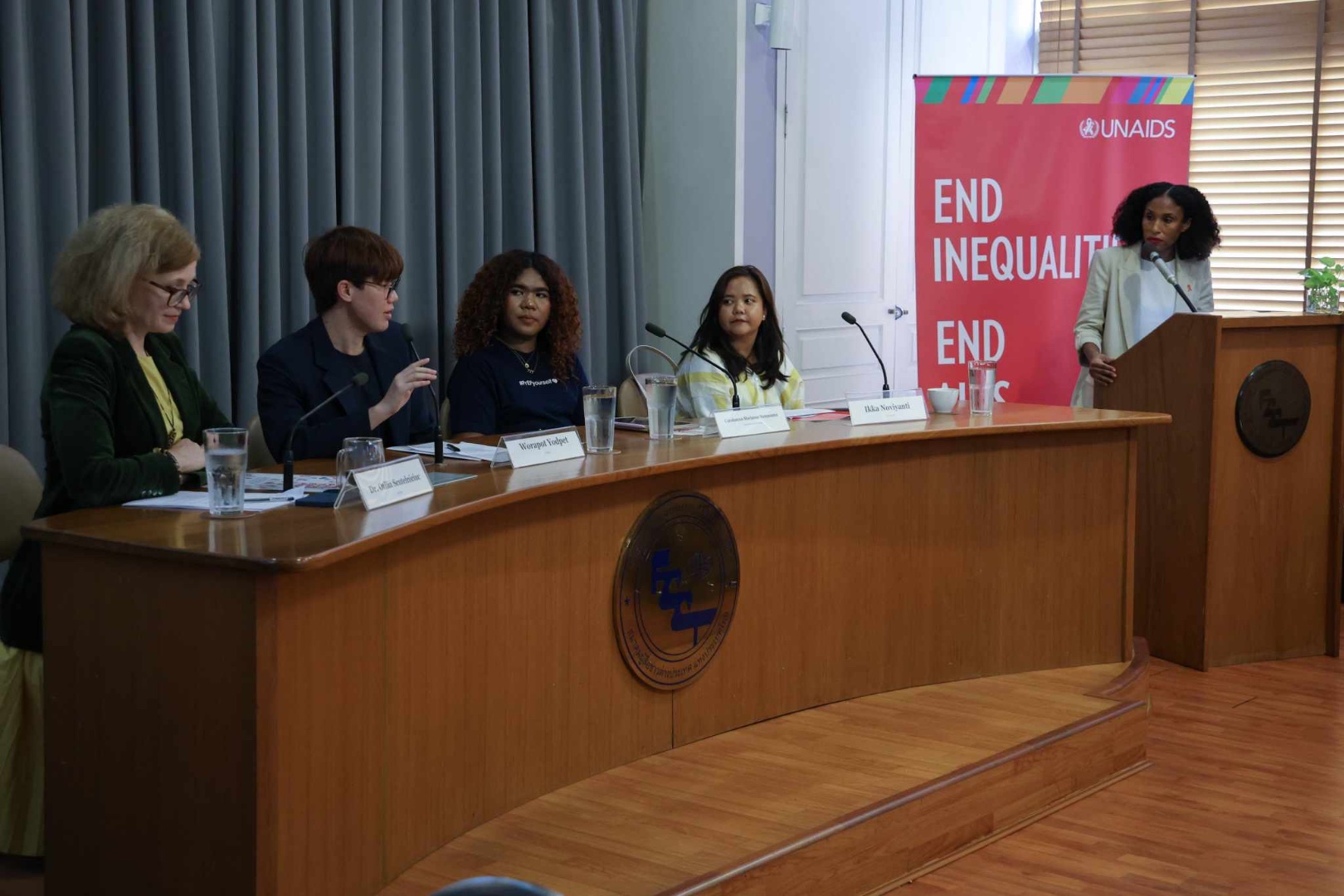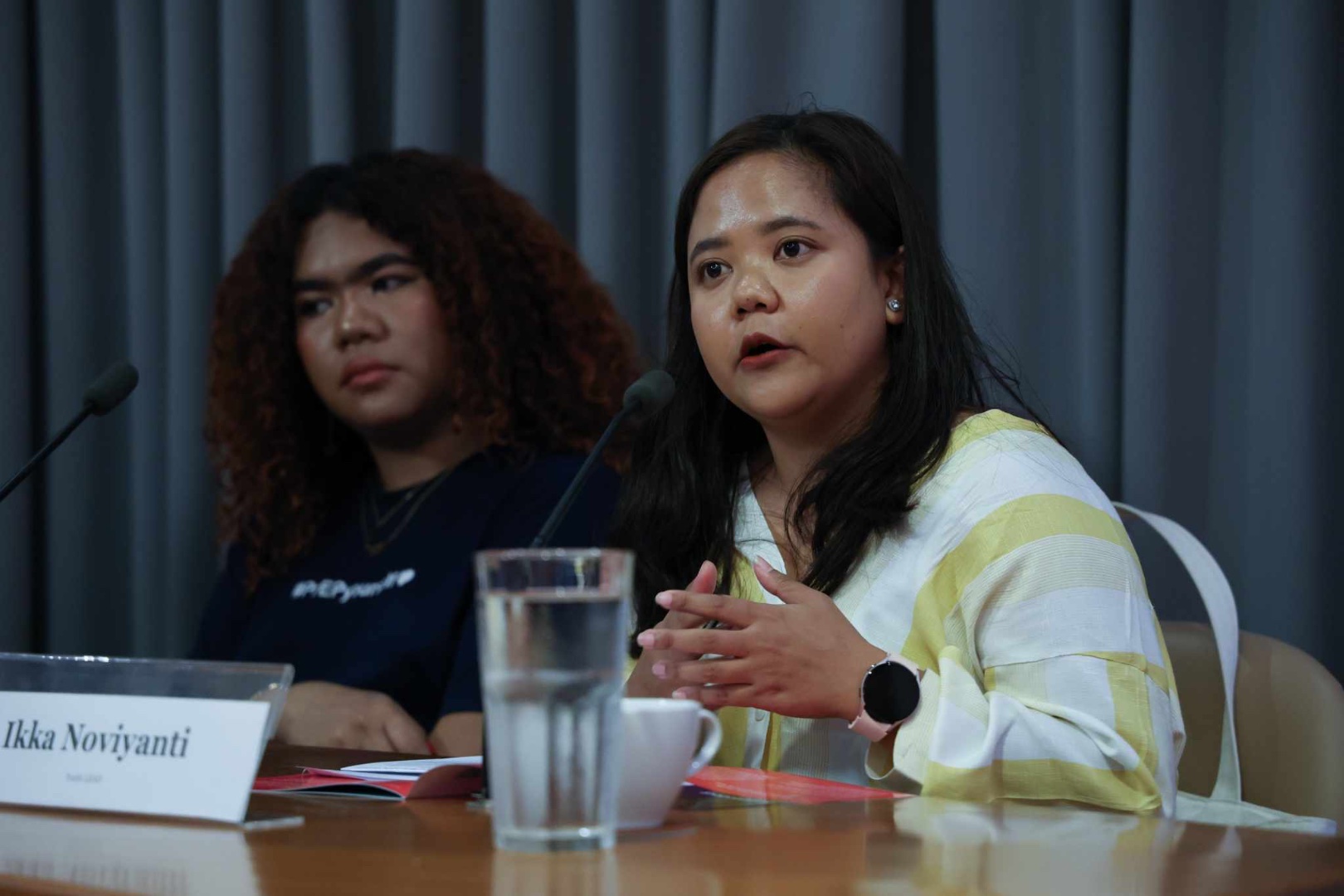Sounding the Alarm: Addressing the HIV Crisis among Young Key Populations in the Asia Pacific Requires Youth Leadership
On 19 July, the UNAIDS RST Asia Pacific organized the regional launch of the 2023 Global AIDS Update. UNAIDS RSTAP Regional Director, Eamonn Murphy, started the discussion by presenting data specific to the Asia Pacific region extracted from the global report. He emphasized that the report's findings indicate a clear path towards ending AIDS. However, the actual challenge lies in taking effective actions to accomplish this goal. Successful responses are built on a foundation of robust political leadership, which effectively addresses four key aspects1) Tackle inequalities holding back progress; 2) Enable civil society and community organizations in their vital role in response; 3) Ensure sufficient finance and; 4) Scale up evidence-based prevention and treatment.
One of the highlights of the regional data showed that men who have sex with men, transgender people, and people who use drugs are not benefitting sufficiently from HIV prevention primarily due to structural barriers. For instance, 39 countries in the Asia-Pacific region uphold legal barriers to HIV response such as the criminalization of sex work, of same-sex relations, and possession of drugs.
The report also highlighted the disproportionate effects of the HIV epidemic on young key populations (YKPs). Regional data showed that 26 per cent of new HIV infections occurred among young people (15-24 years). However, in Myanmar, Indonesia, Thailand, and the Philippines, young people account for almost half of new HIV infections.

To give an insight into the national HIV response in Indonesia, Carahanna of GWL-INA shared the barriers for YKPs to HIV prevention programmes including the lack of sexuality education in formal education settings, stigma and discrimination, and age restrictions. Ikka, Regional Coordinator of Youth LEAD and a member of Seven Alliance, also shared some of the challenges for young sex workers in Indonesia. She noted that not all sex workers are victims of trafficking, yet criminalization of sex work and discrimination against sex workers has led to a lack of access to HIV and sexuality education, condoms, and other contraceptives resulting in an increased vulnerability to HIV, STIs, and unwanted pregnancy. The same issues are echoed in the Philippines, with Mac of LAKAN Network revealing that new HIV infection rates are growing the fastest in the region.
It is thus crucial that HIV programming responds to the different and specific needs of YKPs. To do this, stakeholders must ensure young people’s meaningful engagement in the design, implementation, and monitoring of HIV programmes. Youth LEAD, for example, has developed a Regional Healthcare Worker Training Manual in collaboration with youth-led organizations and UNAIDS. The Manual aims to enhance service provision for YKPs and includes components on the diverse characteristics of YKPs, counselling, and interventions that suit the needs of YKPs. In addition, Ikka highlights that co-creating solutions through community-led monitoring (CLM) provides opportunities to develop programmes that are responsive to key populations.
Tailoring HIV responses to the needs of YKPs does not end in HIV programmes and services but extends to how organizations and educational institutions communicate HIV information to young people. For GWL-INA, tailoring HIV information to the needs and interests of YKPs has been key in their well-known social media brand, TestJKT, which was co-developed with APCOM. This includes packaging HIV data and information together with lifestyle tips and ensuring that their social media presence is relatable for young people. UNESCO takes this even further by developing digital resources to teach comprehensive sexuality education to young people in both formal education and out-of-school settings. Worapot, Associate Project Officer at UNESCO Bangkok, adds that digital resources can be innovative solutions that address the lack of accessibility to sexuality education.

Overall, the issue that young key populations in the Asia-Pacific region are increasingly vulnerable to HIV can be addressed by adapting HIV interventions to the needs of young people. But this cannot be done by governments or civil society organizations alone. As Ikka emphasized, “It is crucial to engage youth-led organizations and YKPs in the whole process of HIV response. Governments should create safe spaces to consult young people and YKPs in the development of key guiding documents such as the national AIDS strategic plan, funding proposal, and SOPS on HIV service delivery. Other stakeholders should also engage youth-led organizations in joint monitoring and advocacy efforts.” This is without its challenges. Youth-led organizations face significant barriers to meaningfully engaging in national HIV responses, such as age-based discrimination, and limited capacity in developing proposals and understanding processes. A lot of mentoring, specialized training and support for youth-led organizations is needed. “Without a strong and sustainable youth leadership, the voices of YKP will not be heard, leading to programmes that do not meet the needs of the targeted populations and an HIV response that leaves youth behind.”
Read full report on the UNAIDS website.

